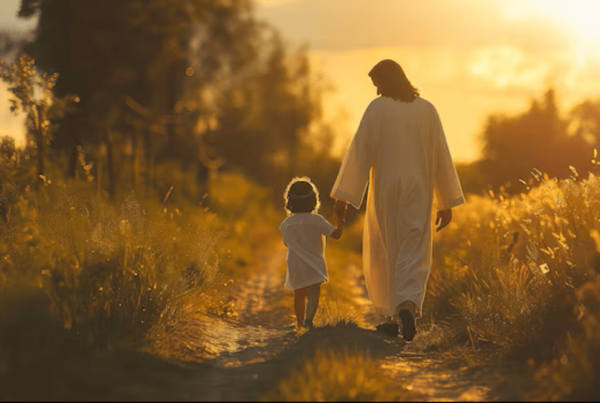Fifty days after Easter, the Holy Spirit descended upon the disciples in Jerusalem. Tongues of fire rested on each of the twelve as they proclaimed the gospel to every nation under heaven. God-fearing Jews from around the globe heard the good news of Jesus in their language. Over three thousand people were baptized. This day would become known as the birth of the church.
Pentecost celebrates the Holy Spirit’s power to create and sustain the church worldwide. But how is this power at work today? What is the mission of each church member? Jesus answered his disciples in Matthew 28:19-20:
“Therefore go and make disciples of all nations, baptizing them in the name of the Father and of the Son and of the Holy Spirit, and teaching them to obey everything I have commanded you. And surely I am with you always, to the very end of the age.”
The mission of the church is to make disciples of all nations. How? By baptizing and teaching. Baptism is a beautiful sacrament. The representation of a believer’s journey from death to life. Baptism and confirmation mark the Christian’s membership in the body of Christ.
This command for teaching is not simple. If it were just a manner of conveying information, our problems would have been solved a long time ago. Instead, we are to share divine knowledge in a way that transforms the hearts and minds of our community, “obeying everything Jesus commanded us.” So how should the church teach its people? The Guatemalans show us the way through the Huipil.
The Huipil is the top or torso portion of traditional, indigenous dresses. Mothers, sisters, daughters, and friends work together to craft each hand-woven piece. These colorful works of art tell a story. Each pattern is a deliberate choice — containing the story of their region and family.
As each year passes, the women of each tribe pass along these techniques to the next generation. Hours are spent at the loom, laughing and working together. Mistakes are made and corrected. Stories are repeated and embellished. Plans are made and life is transformed under the loom maker’s hands. This identity, so carefully crafted amongst the community, is then placed on display. Everywhere they go, these women carry the marks of their culture and family.
Machines can weave these patterns. Mass-produced clothes are produced for a fraction of the time and cost. But the community aspect is what makes huipils special. These handcrafted pieces represent a culture determined to consciously shape and develop the next generation into people who know who they are.
As we celebrate the birth of the church, we must ask ourselves: are we truly engaging in discipleship? Do we learn and grow in community? Are we passing along our knowledge? Do we share our victories and defeats? Do we work alongside the younger generation, helping them weave and grow their identity?
After Pentecost, the church calendar moves into “ordinary time.” These days and weeks are not a special season like Advent, but they are a time in which we can focus on the work of the church. Though we might not weave huipils, we can spend time together. Whether cooking dinner or performing surgery at Obras, we can pass along the traditions of the faith. We lead by example, sharing our mistakes and our triumphs, as we all learn to weave together.
Then we might be identified as Christians, not by the Bible verses we’ve learned, but by the love we wear for one another.





